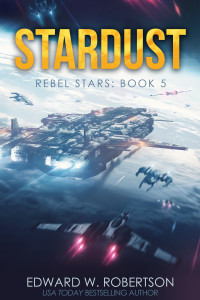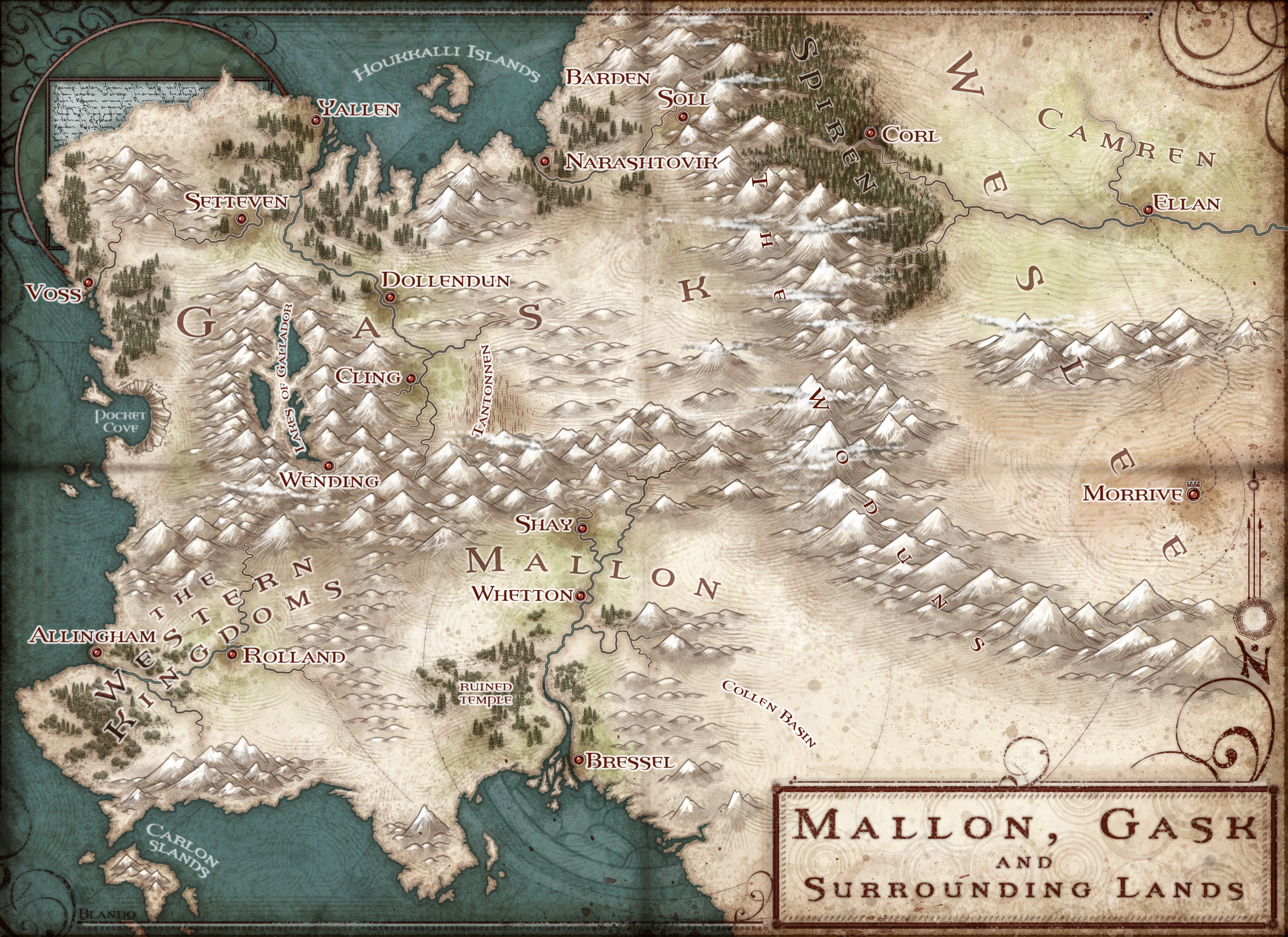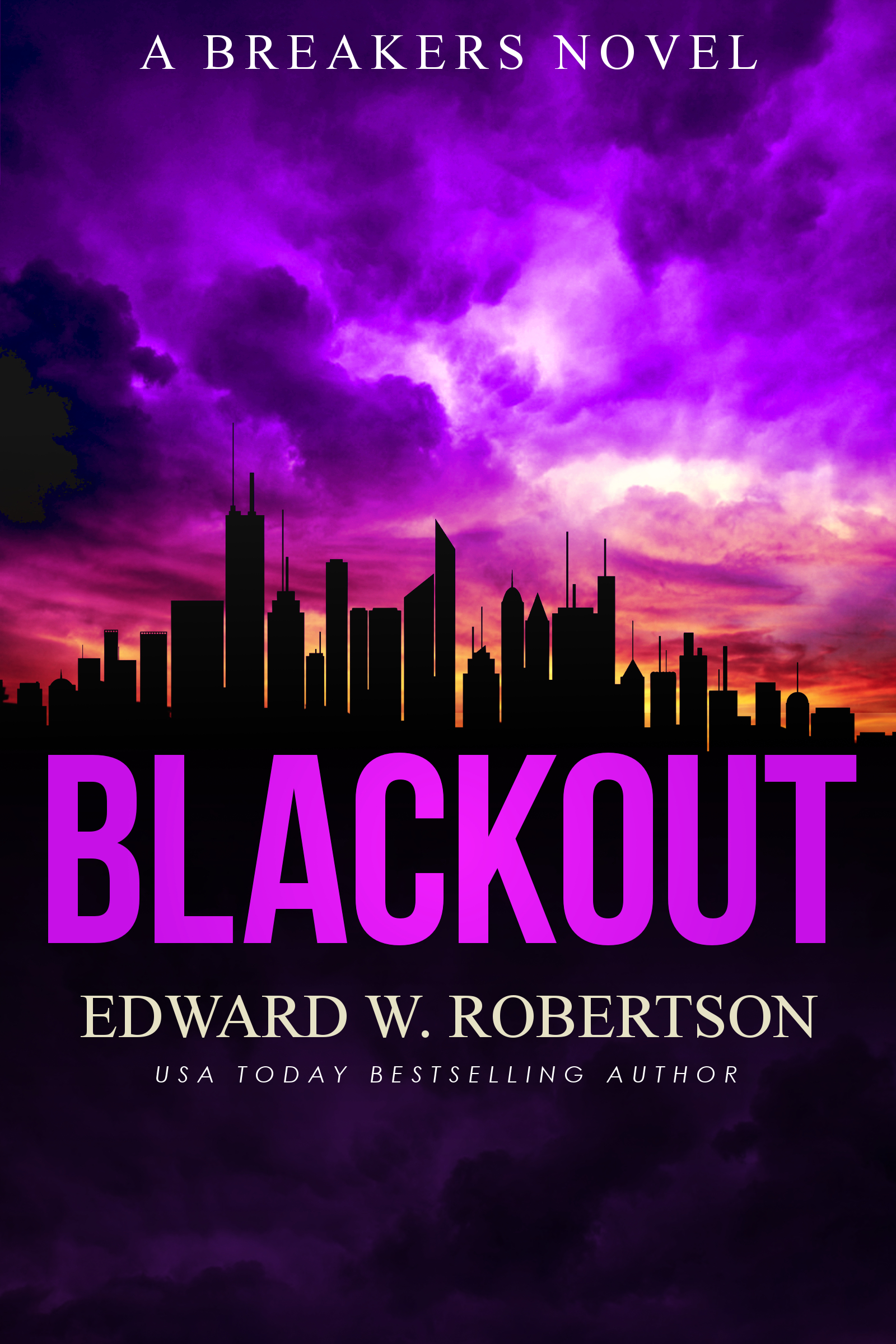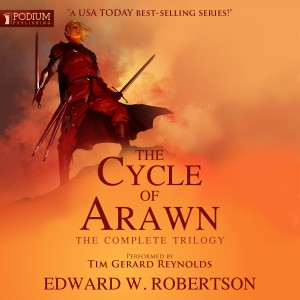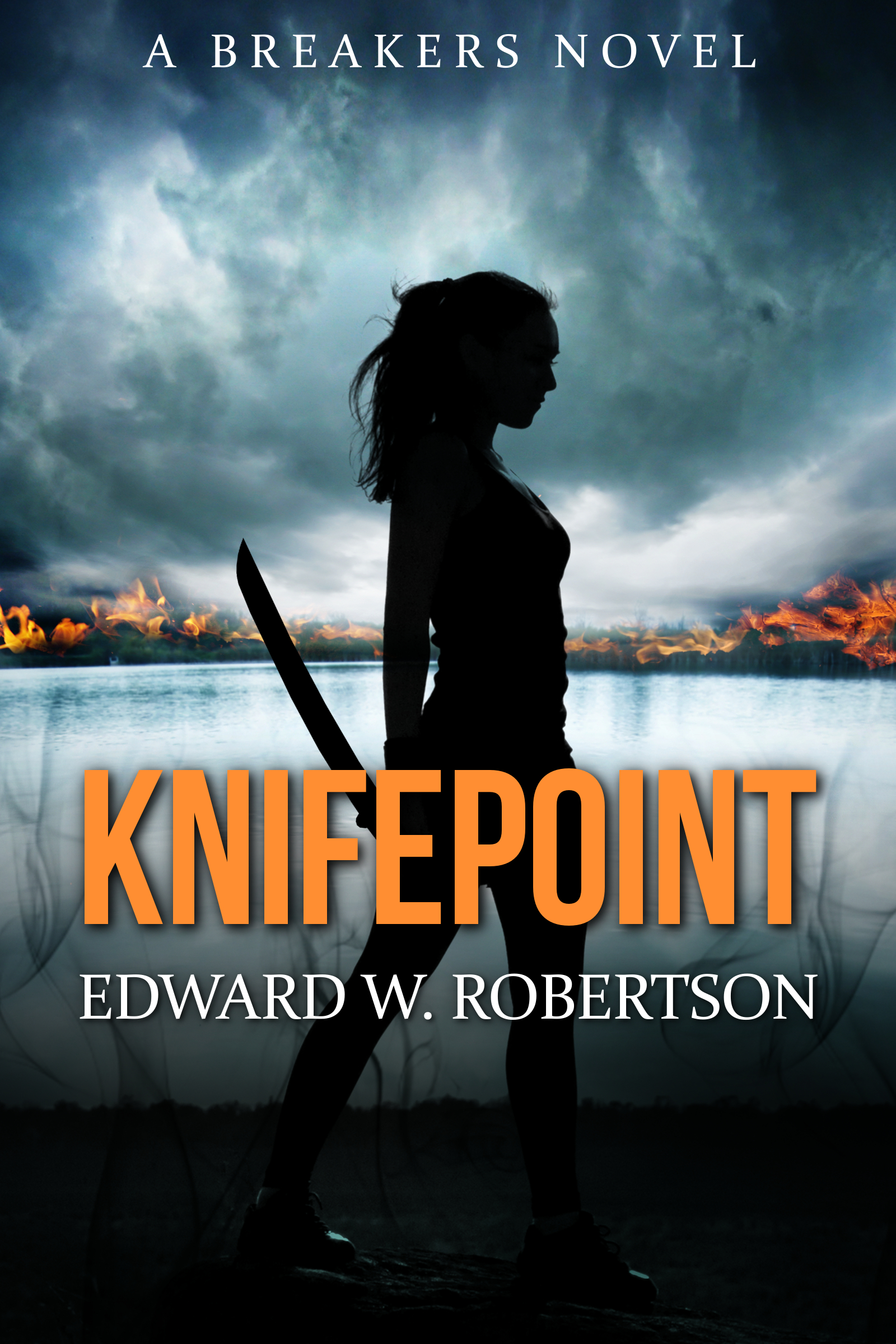Hello everyone. The end is here. THE CYCLE OF GALAND, the final book of The Cycle of Galand, is now live.
You can get it on Audible, Amazon audio, ebook, and paperback.
A part of me is very sad to bring this series to an end. But I am also very proud of this one. In it, I tried to answer as many remaining questions in the series as I could. Including some I didn’t realize I was asking until the very end. Nor could I have asked for anything more from the characters. They gave it everything.
There is a lot more I could say, but you can find most of it in the afterword to this book. But a few things. First, thank you so much for following these characters through to the finish. You guys gave me a career, and along with the Breakers series, Arawn and Galand are the reasons why. Thank you.
As for the most obvious question: Will there be any more books about Dante and Blays? For now, the answer is I don’t know. I wrote the first book, The White Tree, back in 2007, 17 years ago now. Once the last Cally book is done later this year, I’ll have written 17 novels in this world. And I was actually writing about an earlier form of Dante way back in 1997—when I was the same age he is at the start of The White Tree. A part of me can’t imagine leaving these characters behind. They’ve been with me pretty much my whole life.
But I’ve put Dante and Blays through so much. I think it’s important to give characters a proper ending to their story, and I’ll never be able to write a bigger ending for them than this. It might be their time.
Then again…there are more stories that could be told. You’ll see what I mean.
At the very least, if there are any more, it won’t be for a few years. First, there’s another universe I’ve been wanting to write for a long, long time. I need to explore that world first. And frankly, I think Dante and Blays have earned a much-deserved break.
In the meantime, reading my new books is more than enough, but if you’d like to help support me and ensure I can keep doing this for another 20+ years, I have started a Substack you are welcome to subscribe to:
https://edwardwrobertson.substack.com
I will be publishing my short fiction new and old there, along with occasional updates, maybe excerpts from upcoming works, etc. It’s only just getting started, but I’ve posted the very first Dante and Blays story that was ever published there, and there will be some more tales about them in the future. Who knows, maybe that’s where the idea for another series might come from.
Anyway, that’s it, I think. Thank you, one last time. And for now, here’s one last trip into the dream.
All right! If you haven’t grabbed it already, THE SHATTERED PATH: The Cycle of Galand #9 is now live on audio (or through Audible, if you prefer) and ebook, with paperback coming in the next day or two.

This is the second-to-last book in the series—and the finale, #10, is already finished, recorded, and in post-production. It will be out on July 2. So if you’ve been waiting for the series to be completed before diving in—and with the way the fantasy world is these days, I don’t blame you—well, it’s done. And it, and its world, wound up bigger than I ever imagined.
A quick side note: #9 and 10 were originally supposed to be a single book before getting much too long for that (ha ha, can you imagine that, one of my books getting longer than I meant it to be?). Since their stories are more tightly connected than previous entries, I wanted to be sure to release them back-to-back like this, which is why it took longer between #8 and 9 than I normally try to take with these things.
I discuss the series’ origins and development over time in the afterword of #10, so I think I’ll save anything more along those lines for when the last book comes out (which again, is just six weeks from now). Well, except to say two things: number one, I have no plans for any further books in this world or with these characters, but I’m absolutely not ruling it out, either. The future will be a surprise to you and me both.
And second, I’ve had a plan for how the series would end since finishing #7, but it took a little longer to get there than I meant it to. If I can speak quite frankly, I would have preferred #8, 9 and 10 to have been two books instead of three. For reasons of narrative structure, that turned out to be impossible, and it simply required three books. Still, at times the story here hasn’t been advancing quite as fast as it would have in my ideal world.
With that being said—some stuff came together in #9 and 10 that tied together in ways that practically had me doing cartwheels when it popped into my head. I am very, very happy with how the two-part finale turned out, especially the final book of this series. I think the payoff will very much be worth the journey.
As always, thanks for reading or listening.
(P.S.: I wrote these two books for close to 18 months nonstop, including an insane deadline-beating final push at the end of 2023 and first few months of 2024, and I dropped off the face of the earth for a bit there. But it would be nice to check in with you all a little more often. After this series wraps up, I’ll try to update the site more regularly regarding what’s coming next, my progress, maybe occasional tidbits about writing or whatever. We will see. Anyway—go read!)
Doing a quick post here:
THE SPEAR OF STARS is now live on audiobook. HOWEVER, a lot of people are reporting a technical problem with the chapters being out of order. If it starts on chapter 17, or in the middle of a big battle—or if chapter 2 throws you into chapter 17/big huge battle—your chapters are out of order.
Several people have told me they fixed it just by deleting the file and redownloading it. If you run into this problem, give that a try.
For clarity, the real chapter 1 opens with the following line: “The ship rose like a black phantom from the gray of the fog.”
The real chapter 2 opens with: “Dante accepted the book with the same reverence he felt when conducting ceremonies at the Cathedral of Ivars.”
If either chapter starts instead with the Blighted running through the grass, the book is out of order. In which case, delete + redownload.
My publisher’s already working with Audible to get this resolved, but figured I’d better give you all a heads up, as this has confused more than a few people already—myself included!
Will update with anything new.
The savvier among you might have noticed that it’s been taking me an unusually long time to finish my current project, the next REBEL STARS book.
Well, that’s because I wasn’t writing one Rebel Stars book. I was writing two of them. And I’ve finished the series.
Oh, and if you haven’t started the series yet, I’ve also put the first three books in a box set on both ebook and audiobook. And the ebook box is temporarily just $0.99. And all of these are available everywhere.
If you’re completely unfamiliar with the series, Rebel Stars is a space opera set 1000 years in the future of the BREAKERS series, where a motley crew must come together to expose—and fight back against—a deep conspiracy that threatens to destroy the human species.
Without further ado, let’s get started on the insanely long list o’ links!
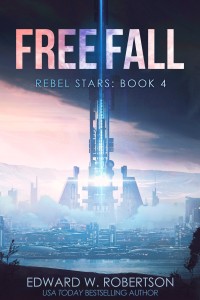 First is book #4, FREEFALL:
First is book #4, FREEFALL:
Next up is STARDUST, book #5 and the grand finale:
Fun thing about this book: when I start a series, I usually have no idea how it’s going to end. But one of the very last scenes in STARDUST, right before the epilogue, is something I’ve had in mind since before I wrote a single word of these books. Finally getting to write it after three and a half years of waiting felt pretty special.
Onto the box set! This includes books 0, 1, and 2 of the series: REBEL, OUTLAW, and TRAITOR. Like the others, the ebook can be found on Amazon, Amazon UK, iBooks, Kobo, Nook, and Google Play. The audiobook’s on Audible, Amazon, and iTunes.
(I was hoping to have RONIN out on audio by now, too, but I ran into a snag in production. But I’ll try to get the remaining three in audio over the course of 2018.)
In hindsight, I’m really happy I decided to write these back to back. I knew FREEFALL was going to end on a cliffhanger and I really didn’t want to make everyone wait another 12-18 months until I could clear out the time to write and publish the final novel. One of my chief goals is to always deliver the end of a series in a timely manner. I hope I’ve done so for you once again.
This has also cleared the decks for me to focus on the CYCLE OF GALAND in 2018. I have nothing else major going on, so I’ll have two new Galand books out year, likely one in the spring and one in late summer/early fall, which means the respective audiobooks will probably be out in the summer and late fall. I’ve already started plotting book #5 and will start the actual writing after I’ve had a few more days to recover from the last six months of work!
Is that it? Yes, I think that’s it for now. I very much hope you enjoy the rest of the series.
~
For reference, here’s the complete REBEL STARS series in order:
REBEL (Book 0)
OUTLAW (Book 1)
TRAITOR (Book 2)
RONIN (Book 3)
FREEFALL (Book 4)
STARDUST (Book 5)
Hear ye, hear ye! THE SILVER THIEF: The Cycle of Galand #2 is now live (almost) everywhere. You can find it on Amazon, Amazon UK, iBooks, B&N Nook, Kobo, Google Play, and paperback. The previous book, THE RED SEA, can be found on Amazon.
(NOTE: in a few days, THE SILVER THIEF will be moved into Kindle Unlimited, meaning it’ll only be available through Amazon. If you’re not an Amazon user, please try to snag it before then!)
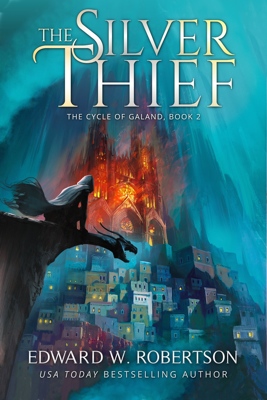 This was a fun one to write. I got to expand the world in two or three different dimensions, which is one of the major advantages of writing several books in the same universe. It feels like I get to put more and more “epic” into “epic fantasy” as the series goes on.
This was a fun one to write. I got to expand the world in two or three different dimensions, which is one of the major advantages of writing several books in the same universe. It feels like I get to put more and more “epic” into “epic fantasy” as the series goes on.
Additionally, unlike THE CYCLE OF ARAWN, where each book was a self-contained story, with a few years taking place offscreen between each book, THE SILVER THIEF picks up directly where THE RED SEA left off. I’m looking forward to building a single long, sustained story with this. I wouldn’t be surprised if it requires four books rather than the trilogy I originally saw it as.
Meanwhile, I’m sure a lot of you are wondering when THE RED SEA will be out on audiobook. I’ve got some good news: I heard from my publisher the other day, and while there’s still not a concrete date, it sounds like the preorder will be up shortly after the holidays, with the book going live not long after that. I’ll absolutely post here as soon as it’s available.
As for the next book in THE CYCLE OF GALAND, I have another project or two to finish first, including the next REBEL STARS book. If I stick to my typical schedule, that means Galand #3 will be out sometime this summer. If it continues after that, the fourth book should be out about six months after that (roughly a year from now).
For now, then, happy holidays and enjoy THE SILVER THIEF. I’m thrilled to have been able to continue the adventures of Dante and Blays—I’m already looking forward to writing the next one.
An epic fantasy novel doesn’t feel quite right without a sweet map in the front of it. For your perusal, here’s a detailed map of Mallon, Gask, and several other realms visited in The Cycle of Arawn.
Click to expand an extraordinarily large version. A map for the first book in the Cycle of Galand, The Red Sea, can be seen here.
The end is here.
BLACKOUT, the final book in the post-apocalyptic Breakers series, is now live. It’s available in all major online bookstores:
BLACKOUT is the eighth book in the series. If you’re catching up, or missed an earlier book, here’s a complete list of the series:
- Breakers (Book 1)
- Melt Down (Book 2)
- Outcome (Novella)
- Knifepoint (Book 3)
- Reapers (Book 4)
- Cut Off (Book 5)
- Captives (Book 6)
- Relapse (Book 7)
- Blackout (Book 8)
The first three books are also available in one volume: The Breakers Series, Books 1-3. If you’re new to the series, the box set is currently on sale for $0.99. Find it on Amazon, iBooks, B&N, Kobo, and Google.
BLACKOUT is, without doubt, the most bittersweet book I’ve ever written. The Breakers series — and everyone who’s read them — gave me my career. I’ve lived (and in some cases died!) with these characters for the last four years of my life. The series is a million words in total. It’s taken me well over 3000 hours of work. After that much time spent in this world, it’s going to be incredibly hard to leave it behind.
As an author, it’s always tempting to stick with a series for as long as people keep buying it. But I wanted to go out on a high note. To finish the series before it had the chance to get stale. As much fun as it is to live in this world, all of the best stories have an ending.
As I neared the end of BLACKOUT, I started my work day at 9 AM. By the time I stopped, it was 4 AM, I’d written thirty pages — far more than I’ve ever written before — and finished the book. Because I couldn’t wait to find out where everyone was going to wind up.
I’m sad to leave Breakers behind. But giving an ending to these characters has been my proudest moment as an author.
Don’t worry, I’ll still be writing for a long time. I might even revisit this world some day. For now, though, we’ve reached the end of the road.
Thanks for reading.
The Cycle of Arawn is now on audiobook. By me, Edward W. Robertson. 🙂
And I don’t just mean The White Tree — I mean all three books: The White Tree, The Great Rift, and The Black Star. The complete epic fantasy trilogy in one collection.
In total, it’s 66 hours long. That’s nearly three days of listening. All narrated by Tim Gerard Reynolds — the voice of Red Rising, the sequels to Hugh Howey’s Wool, and Michael J. Sullivan’s Riyria series.
You can find it on Audible, Amazon, Audible UK, and Amazon UK.
I’ve listened to several hours so far, and the work Tim did in bringing Dante, Blays, Cally, and everyone is to life is just incredible. When I write future books in this world, it’s going to be with his voice in my head.
I’m not the only one who’s gotten a kick out of it. From a couple weeks ago:
Now, I’m quite certain George R.R. Martin has far better things to do with his time than haunt the audiobook bestsellers lists to ensure his dominance goes on unabated. But I like to imagine that he woke up one morning, happened to see this interloper in the midst of all that Game of Thrones, and thought, “The Cycle of what?”
More good news: the crazy success of this trilogy (it’s been as high as #27 in all audiobooks in the US, and #12 in the UK!) guarantees that The Cycle of Galand, the next trilogy, will make it to audio, too. I don’t have a release date for The Red Sea yet, but as soon as I do, I’ll post it here.
In the meantime, hope you enjoy The Cycle of Arawn. Thanks, everyone.
Yesterday, Amazon touched off something of a firestorm by emailing hordes of readers and KDP authors for help, requesting authors email Hachette CEO Michael Pietsch to explain why lower prices are better for readers and the publishing industry.
Today, Pietsch has been responding to everyone who’s emailed him. I find his response reasonable enough — for the most part, he claims, Hachette’s ebooks fall beneath Amazon’s preferred $9.99 cap — but there’s one part that stuck out to me.
“The invention of mass-market paperbacks was great for all because it was not intended to replace hardbacks but to create a new format available later, at a lower price.”
This is false.
Well, technically, it isn’t false — it’s true that mass market paperbacks weren’t invented to replace hardbacks. But they weren’t published in the modern fashion, with a publisher releasing them months after the more expensive hardback. Rather, paperback rights were purchased by competing publishers who were able to sell their paperbacks for 10% of the price of the original hardcovers.
In other words, they were invented to disrupt the hardcover industry.
In 1939, the average hardcover cost $2.50-3.00 — the modern equivalent of $40-50. The new paperbacks cost $0.25 — a little over $4.00. Presumably, the first paperbacks were reprints in order to ensure the audience for those titles was already in place and minimize the paperback house’s risk of printing a dud. However, paperbacks blew up the market so well that by 1950, publishing houses were publishing paperback originals. It was feared these paperback originals would “undermine the whole structure of publishing.”
And they might have.
For more than twenty years, paperback prices held steady. They even declined; in 1961, some paperbacks cost as little as $0.35, just $2.79 in modern dollars. Then a funny thing happened. Starting around 1966, costs climbed to an adjusted $4-5. By 1975, they hit $6-7. And by the mid-1980s, mass market paperbacks cost the equivalent of $7-9.50. They’ve hung around $7.99-9.99 ever since.
After 25 years of steady prices, what happened to cause paperback prices to triple over the next twenty years?
When I first did this research two years ago, I stumbled onto the fact that this timeline coincided precisely with the conglomeration of the publishing industry. Beginning around 1958 and accelerating in the ’60s, small and medium publishers were gobbled up by the majors, culminating in today’s environment of the Big 5 (formerly 6). I assumed that the decrease in competition allowed the major houses to increase prices.
However, I think that’s only part of the puzzle. I am now entering the realm of speculation, so take the following with grains of salt. But I believe two more factors are at play.
First, most of the independent paperback publishing houses were bought up by larger houses. In other words, not only was competition decreased, but in many cases, it was gone. Meanwhile, tenfold disparity between the price of hardcovers and the price of paperbacks may have felt like far too much. Undermining the value of literature, if you will.
Second — and this is pure intuition; more research is required here — I expect that major publishers quit selling off their paperback rights. Likely, they used their newly acquired paperback imprints to handle publication of that format. No longer did you have two different publishers competing on price for the exact same title. Rather, you had a single company whose interest, obviously, was that these two separate editions wouldn’t compete at all.
That, I expect, is when Pietsch’s model finally came into play: a company releases a new book in hardcover, selling to all those who prefer the format or can’t wait to read it. Sometime down the road, months or even a year later, a paperback format is released, picking up a second market of readers.
Whatever Hachette would like us to believe, this is a radical change in intent from the paperback’s original role.
As a result, rather than selling a hardcover for $50 and a paperback for $4, they’re selling the hardcovers for $25-36 — often discounted by Amazon to $15-20 — and the paperbacks for $8-10.
Meanwhile, ebooks are lodged messily in the middle. It’s 2014. You can’t delay the ebook release the way you can delay the paperback release. You’d lose out on all those readers who now primarily or solely read ebooks. But so long as it is less than the hardcover, it’s still a bargain. Sort of. $8-15 is less than $15-20, right? Just make sure to drop it to $6-10 when that $8-10 paperback is finally made available.
It’s no wonder traditional publishers and Amazon are at loggerheads. Like Penguin and Pocket Books in the 1930s, Amazon essentially invented a new format of book. One that, with no per-unit production costs and negligible returns, could be the cheapest format yet. A format capable of opening up a new market of readers.
Or, more accurately, of resurrecting it.
So hey guys, I dunno if you’ve heard about this–it’s not like every single person with an interest in self-publishing hasn’t weighed in already–but according to the New York Times, John Locke paid for upwards of 300 fake Amazon reviews on his books.
Obviously, he wasn’t the only one.
First off, I’m not going to name any names. I would dearly, dearly love to. My vigilante gland is fit to burst and has taken on a demonstrably Batmannish shape. But frankly, I don’t want to be involved in a witch hunt, I fear reprisals, and in many cases it’s just too hard to be perfectly certain that some of these sketchy reviews are in fact fake. I don’t want to torch any innocents.
If you wanted to go check out which authors have bought reviews, though, you could–theoretically speaking–go check out one of Locke’s books, find a cluster of 5-star reviews that all showed up within a day or three of each other, then check out those reviewers’ history to see what else they’ve rated.
This method isn’t foolproof. Sometimes, a bunch of reviews clustered by date means a book was selling really well around then, or did a big giveaway, or the author was seeking out legitimate reviewing outlets at that time. But sometimes, what you will find is that the same group of authors keeps showing up across a bunch of different reviewers all reviewing around the same day. You can be nearly certain those are fakes.
It very quickly becomes clear that there is startling proof that dozens and dozens of authors have paid for fake reviews. And by following the rabbit-trails–if a reviewer has several obviously fake reviews, then every review they’ve left falls under suspicion–some shocking names pop up. Big, big people in the indie world. It’s also shocking just how many there are. There’s evidence that hundreds of different authors have paid for fake Amazon reviews. And this is just from the stuff linked back to John Locke.
First item of note: not all of the authors implicated are self-published.
There’s trad stuff there, too. From big houses and small presses alike. Who knows whether these reviews were bought by authors, publicists, agents, friends, family–impossible to know. But they’re out there. This is not limited to self-published books.
Second item of note: seriously, there’s proof here for hundreds and thousands of fake reviews.
Many of the accounts used to leave these reviews were run by people operating off Fiverr and Craigslist and wherever else. They didn’t leave a single fake review and then quit, they left dozens. Apiece. There are so, so many. We all knew there were fake reviews out there, but to be confronted with evidence of such widespread fraud.. it’s deeply disheartening.
Third item of note: if you’re innocent, you can’t really prove it.
I mean, I guess you can say “I never paid for fake reviews, or used sockpuppets, or review-swaps, or any other shady method of convincing strangers that other strangers loved my book and they should buy it.” You can point out your negative reviews, your reviewers who’ve reviewed dozens of other books, have a fan videotape themselves waving their birth certificate as they log into their Amazon account. But everyone’s got a few reviews that look dodgy to the scrutinizing eye. There’s really no way to prove they’re not fake.
That suspicion is just something we’re going to have to live with, then. To address, when it comes up, as calmly and reasonably as possible. If someone accuses you of faking your reviews, it probably isn’t personal. (And if you have faked a review or two–look, nobody wants to string you up. That’s different from what Locke did. But you should probably stop.) But authors like Locke–and hundreds of goddamn others–have pooped in the pool, to borrow a phrase from one of my fellow indies. Now everyone’s going to look at us like we all stink.
On the other hand, if your sketchy-looking reviews aren’t fake, an accuser is going to have a hard time proving anything. “This review smells funny” is as far as they’ll get. I don’t think that’s going to do any damage to your sterling reputation.
Unlike all these authors whose fraud is exposed. Provable. Documented. Saved. Shared. I would be pretty surprised if other names don’t emerge soon. The internet isn’t that kind.
This scandal feels like it should be the start of a movement to self-publish with integrity. But I’m not sure what that would accomplish, really. It’s just so easy to lie. To cheat. To deceive. Making a bunch of promises and passing out “I Don’t Buy Reviews!” badges won’t prove anything. The ease of deception (and the rewards for deceiving) is why so many have done it.
So starting a movement isn’t the point of this post. It’s much easier–and, I expect, effective–to try to scare the shit out of anyone who’s contemplating buying fake reviews right now.
It’s easy to find you. Anyone can do it. Yeah, other people are cheating. But some of them are being exposed. This is your career we’re talking about. Do you want to put it at risk like that?

